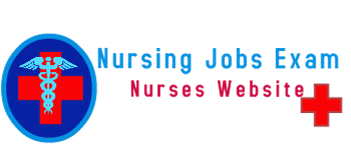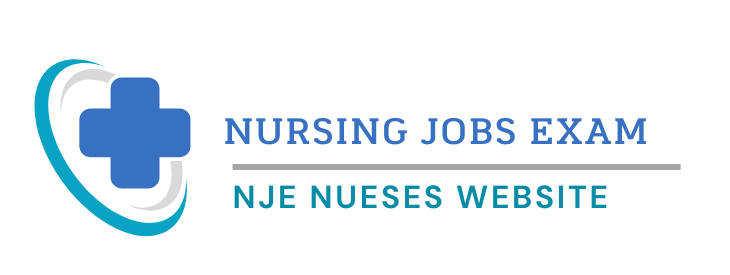Levothyroxine: CLASSIFICATION: PHARMACOTHERAPEUTIC: Synthetic isomer of thyroxine. CLINICAL: Thyroid hormone (T4).
USES OF LEVOTHYROXINE
Levothyroxine: PO treatment of hypothyroidism, pituitary thyroid-stimulating hormone (TSH) suppression. IV: Myxedema coma. OFF LABEL: Management of hemodynamically unstable potential organ donors.
ACTION OF LEVOTHYROXINE
Converts to T3, then binds to thyroid receptor proteins exerting metabolic effects through control of DNA transcription and protein synthesis. Therapeutic Effect: Involved in normal metabolism, growth and development. Increases basal metabolic rate, enhances gluconeogenesis, stimulates protein synthesis.
BLACK BOX ALERT Ineffective, potentially toxic for weight reduction. High doses increase risk of serious, life-threatening toxic effects, especially when used with some anorectic drugs.
PRECAUTIONS OF LEVOTHYROXINE
Contraindications: Hypersensitivity to levothyroxine. Acute MI, untreated subclinical or overt thyrotoxicosis, uncorrected adrenal insufficiency. Capsule: Inability to swallow capsules. Cautions: Elderly pts, angina pectoris, hypertension, other cardiovascular disease, adrenal insufficiency, myxedema, diabetes mellitus and insipidus, swallowing disorders.
PHARMACOKINETICS OF LEVOTHYROXINE
Variable, incomplete absorption from GI tract. Protein binding: greater than 99%. Widely distributed. Deiodinated in peripheral tissues, minimal metabolism in liver. Eliminated by biliary excretion.
Half-life: 6–7 days.
LIFESPAN CONSIDERATIONS OF LEVOTHYROXINE
Pregnancy/Lactation: Does not cross placenta. Minimal distribution in breast milk. Children: No age-related precautions noted. Caution in neonates in interpreting thyroid function tests.
Elderly: May be more sensitive to thyroid effects; individualized dosage recommended.
INTERACTIONS OF LEVOTHYROXINE
DRUG: Cholestyramine, colestipol, aluminum- and magnesium-containing antacids, calcium, iron may decrease absorption (do not administer within 4 hrs). Estrogens may decrease therapeutic effect. May enhance effects of oral anticoagulants (e.g., warfarin). HERBAL: None significant. FOOD: None known. LAB VALUES: None known.
DHA HAAD MOH PROMETRIC EXAM PRACTICE
AVAILABILITY (Rx) OF LEVOTHYROXINE
Capsules: (Tirosint): 13 mcg, 25 mcg, 50 mcg, 75 mcg, 88 mcg, 100 mcg, 112 mcg, 125 mcg, 137 mcg, 150 mcg. Injection, Powder for Reconstitution: 100 mcg, 200 mcg, 500 mcg. Tablets: 25 mcg, 50 mcg, 75 mcg, 88 mcg, 100 mcg, 112 mcg, 125 mcg, 137 mcg, 150 mcg, 175 mcg, 200 mcg, 300 mcg.
ADMINISTRATION/HANDLING OF LEVOTHYROXINE
Do not interchange brands (known issues with bioequivalence between manufacturers).
IV
Reconstitution • Reconstitute 200-mcg or 500-mcg vial with 5 mL 0.9% NaCl to provide concentration of 40 or 100 mcg/mL, respectively; shake until clear.
Rate of administration • Use immediately; discard unused portions. • Give each 100 mcg or less over 1 min.
Storage • Store vials at room temperature.
PO
• Administer in the morning on an empty stomach, 30 min before food. • Administer before breakfast to prevent insomnia. • Tablets may be crushed. • Take 4 hrs apart from antacids, iron, calcium supplements.
IV INCOMPATIBILITIES
Do not use or mix with other IV solutions.
INDICATIONS/ROUTES/DOSAGE OF LEVOTHYROXINE
Note: Doses based on clinical response and laboratory parameters. IV dose is 75–80% of oral dose once daily.
Hypothyroidism
PO: ADULTS 60 YRS OR YOUNGER WITHOUT EVIDENCE OF CORONARY HEART DISEASE: 1.6 mcg/kg/day as single daily dose. Adjust dose by 12.5–25 mcg/day q3–6 wks. Usual maintenance: 100–125 mcg/day.
ADULTS OLDER THAN 60 YRS WITHOUT EVIDENCE OF CORONARY HEART DISEASE: Initially, 25–50 mcg once daily.
ADULTS WITH CARDIAC DISEASE: Initially, 12.5–50 mcg/day. Adjust dose by 12.5–25 mcg/day at 6–8-wk intervals.
CHILDREN OLDER THAN 12 YRS, GROWTH AND PUBERTY INCOMPLETE: 2–3 mcg/kg/day.
CHILDREN 6–12 YRS: 4–5 mcg/kg/day.
CHILDREN 1–5 YRS: 5–6 mcg/kg/day.
CHILDREN 6–12 MOS: 6–8 mcg/kg/day.
CHILDREN 3–5 MOS: 8–10 mcg/kg/day.
CHILDREN YOUNGER THAN 3 MOS: 10–15 mcg/kg/day.
Myxedema Coma
IV: ADULTS, ELDERLY: Initially, 200–400 mcg, then 50–100 mcg once daily until able to tolerate PO administration.
Pituitary Thyroid-Stimulating Hormone (TSH) Suppression
PO: ADULTS, ELDERLY: Doses greater than 2 mcg/kg/day usually required to suppress TSH below 0.1 milliunits/L.
Dosage in Renal/Hepatic Impairment
No dose adjustment.
SIDE EFFECTS OF LEVOTHYROXINE
Occasional: Reversible hair loss at start of therapy in children. Rare: Dry skin, GI intolerance, rash, urticaria, pseudotumor cerebri, severe headache in children.
ADVERSE EFFECTS/TOXIC OF LEVOTHYROXINE
REACTIONS
Excessive dosage produces signs/symptoms of hyperthyroidism (weight loss, palpitations, increased appetite, tremors, anxiety, tachycardia, hypertension, headache, insomnia, menstrual irregularities). Cardiac arrhythmias occur rarely. Long-term therapy may decrease bone mineral density.
NURSING CONSIDERATIONS OF LEVOTHYROXINE
BASELINE ASSESSMENT
Obtain baseline TSH, T3, T4, weight, vital signs. Signs/symptoms of diabetes, diabetes insipidus, adrenal insufficiency, hypopituitarism may become intensified. Treat with adrenocortical steroids before thyroid therapy in coexisting hypothyroidism and hypoadrenalism.
INTERVENTION/EVALUATION OF LEVOTHYROXINE
Monitor pulse for rate, rhythm (report pulse greater than 100 or marked increase). Observe for tremors, anxiety. Assess appetite, sleep pattern. Children: (Undertreatment): May decrease intellectual development, linear growth. (Overtreatment): Adversely affects brain maturation, accelerates bone age. Monitor thyroid function tests.
PATIENT/ FAMILY TEACHING FOR LEVOTHYROXINE
• Do not discontinue drug therapy; re-placement for hypothyroidism is lifelong.
• Follow-up office visits, thyroid function tests are essential.
• Take medication at the same time each day, preferably in the morning.
• Monitor pulse for rate, rhythm; report irregular rhythm or pulse rate over 100 beats/min.
• Promptly report chest pain, weight loss, anxiety, tremors, insomnia.
• Children may have reversible hair loss, increased aggressiveness during first few mos of therapy.
• Full therapeutic effect may take 1–3 wks.
- Nursing Mock Test, Nursing MCQ, DHA, HAAD, MOH PROMETRIC, AIIMS, ESI, NHM NURSING EXAM PART 12
- AIIMS Nursing Officer Previous Question Paper Mock Test
- AIIMS Patna Senior Nursing Officer Recruitment 2023 (127 posts)
- Nursing Mock Test, Nursing MCQ, DHA, HAAD, MOH PROMETRIC, AIIMS, ESI, NHM NURSING EXAM PREPARATION 11
- INFECTIOUS ESOPHAGITIS: Causes Symptoms Treatment


